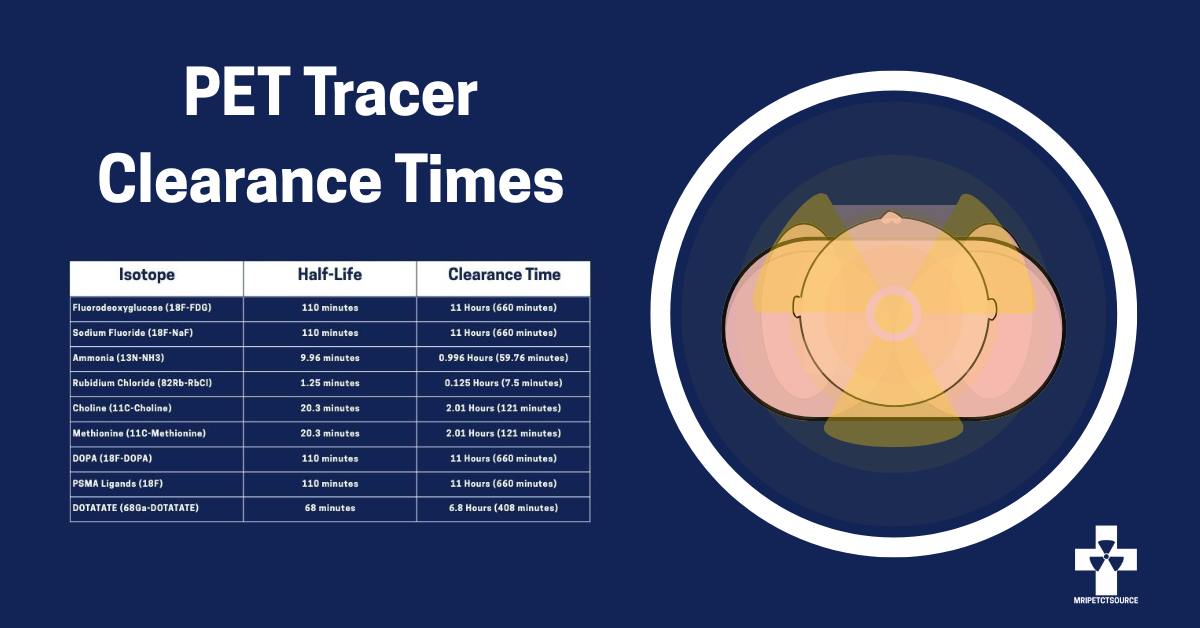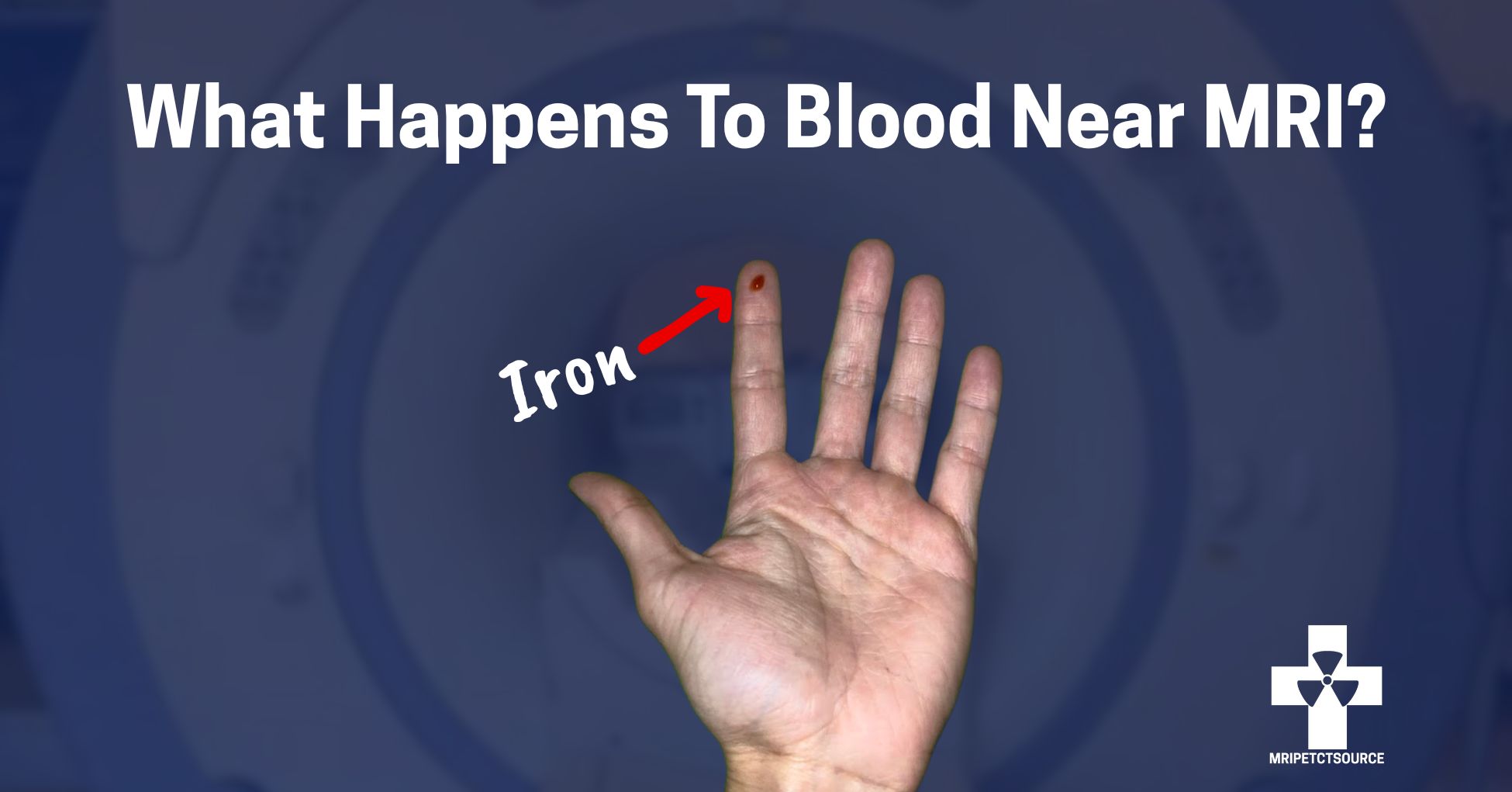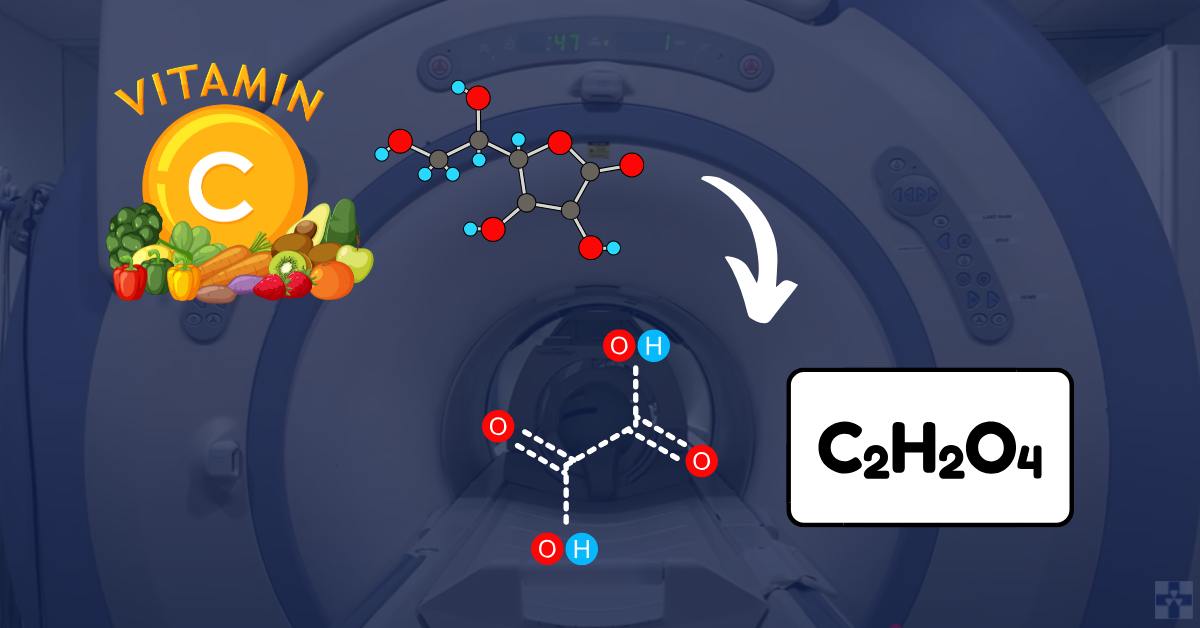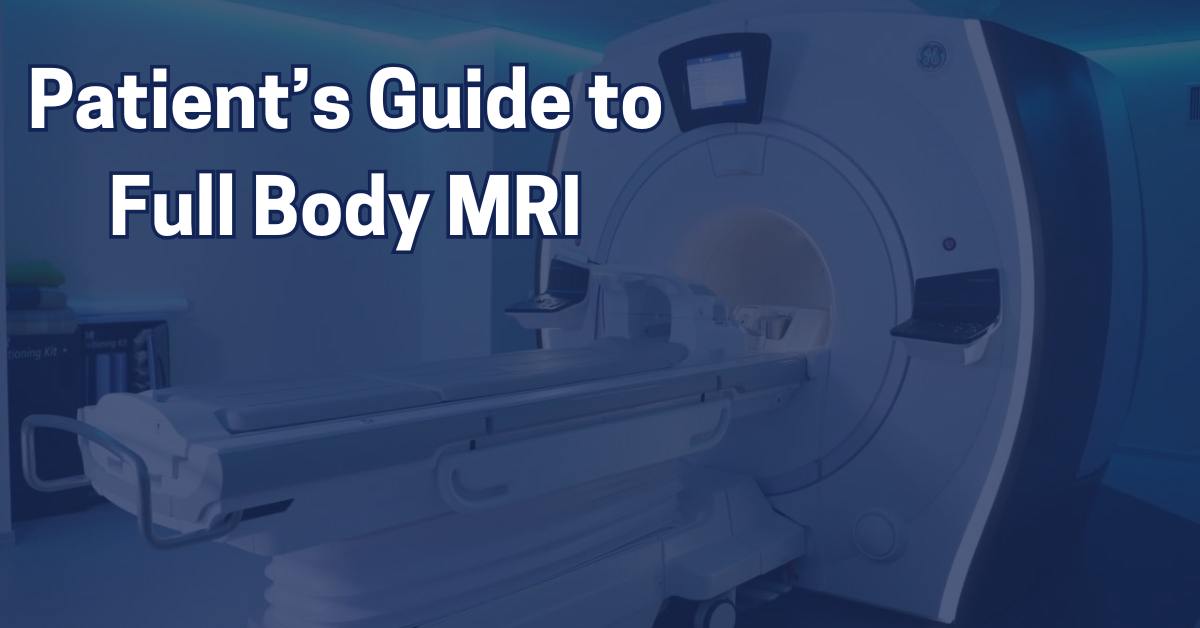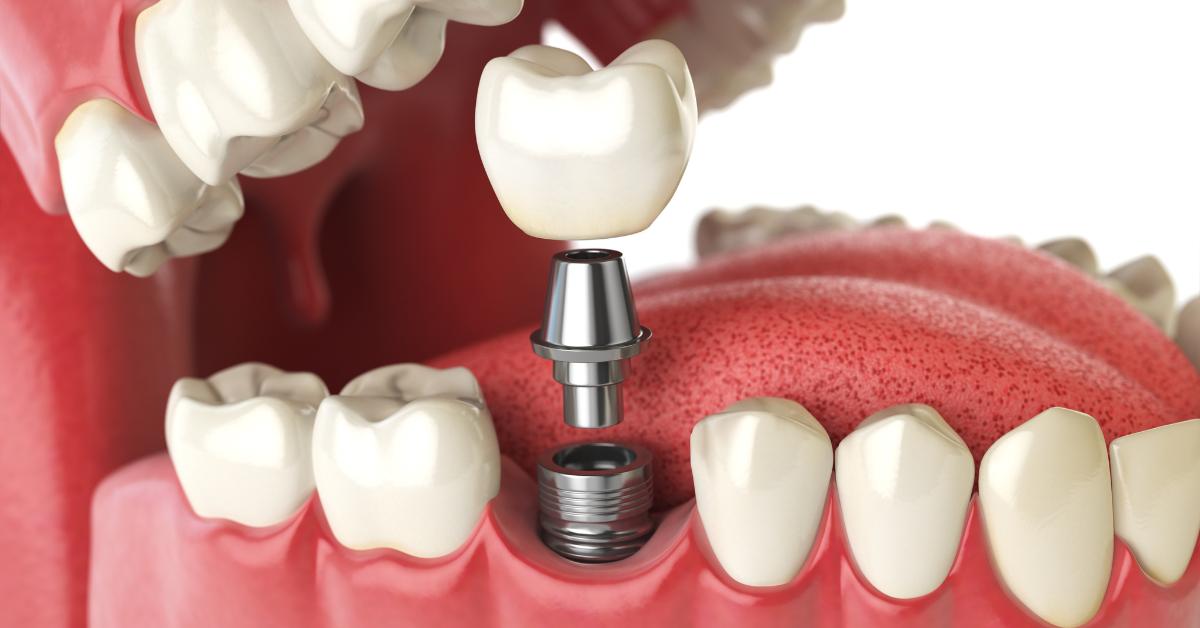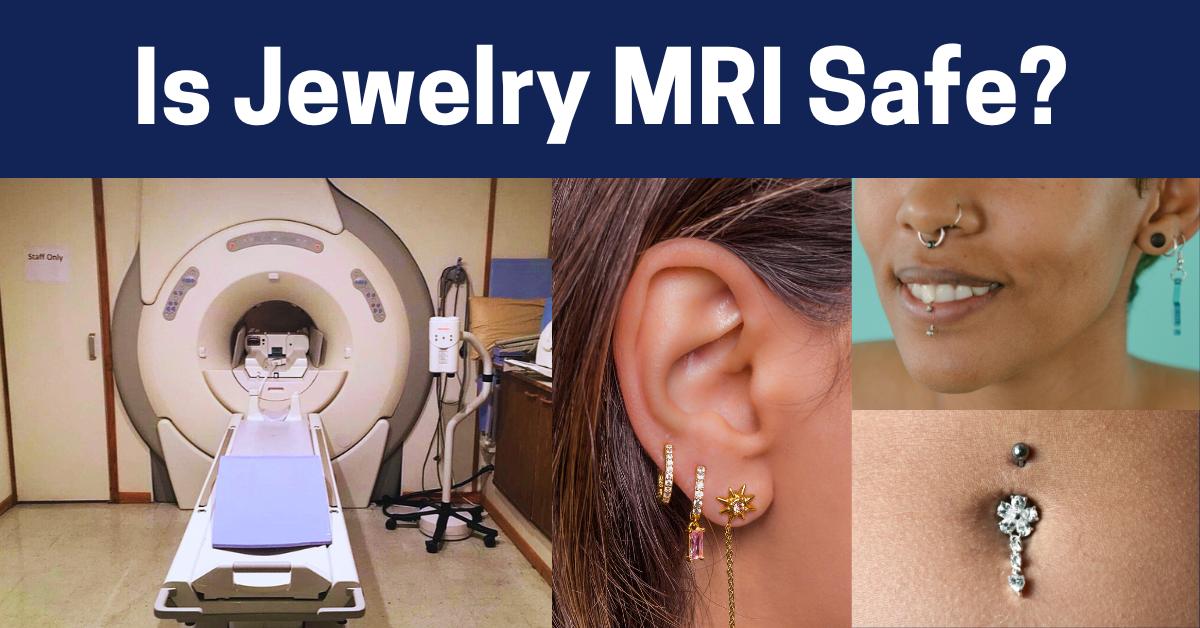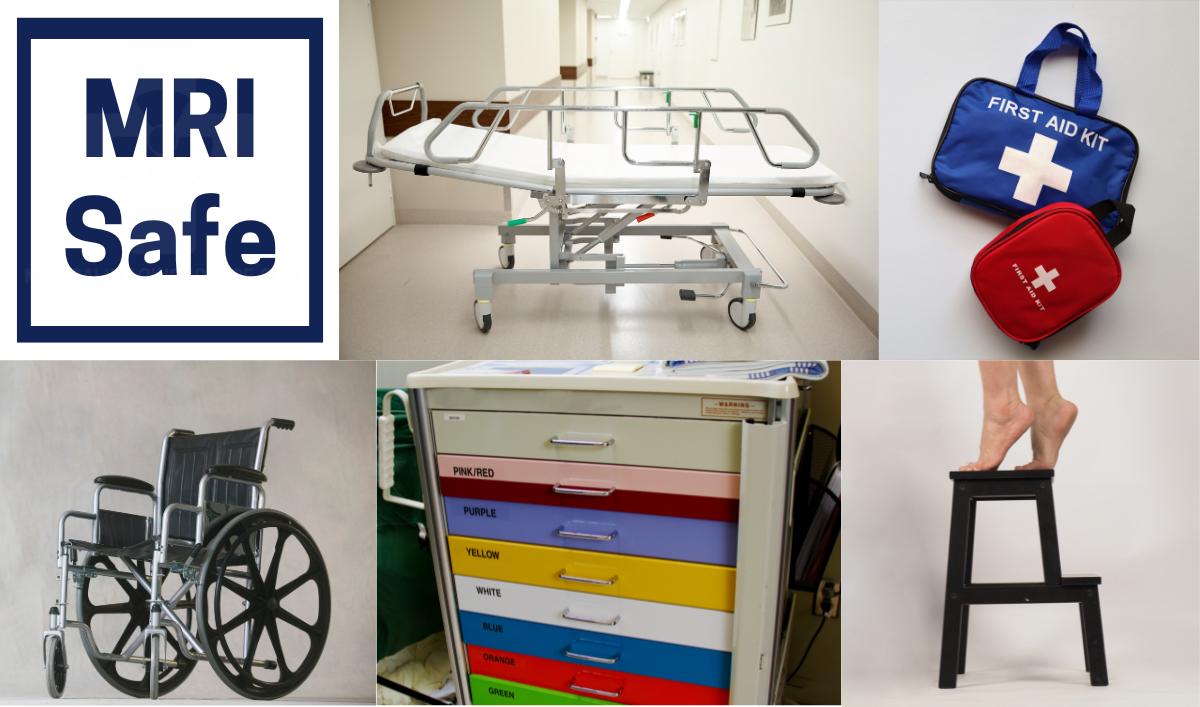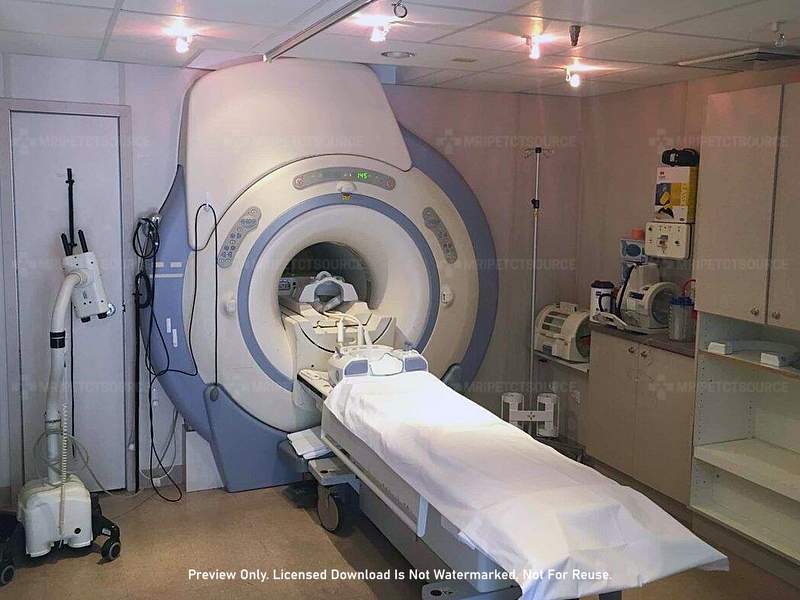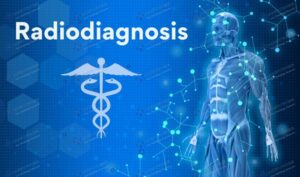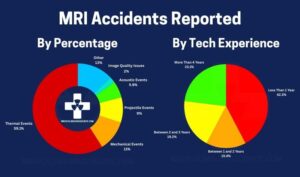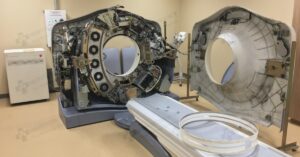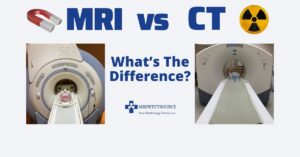How do CT scans work? Understanding the intricacies of CT scan technology sheds light on its remarkable diagnostic capabilities and medical applications.
Computed tomography, commonly known as a CT scan, is a diagnostic imaging procedure that provides clear definition of bones, organs, and soft tissue in as little as 5 minutes. CT scans utilize an x-ray beam that revolves around the patient to collect cross-sectional image data that is reconstructed into image slices for analysis.
What is a CT Scan?
Computed Tomography (CT) is an imaging modality that utilizes X-ray revolving around a center axis to detect and map location of particles as they pass through the anatomy and enter detector modules. During the CT scan, a computer reconstructs a digital rendition showing water, bone, and different densities in the anatomy that can be read by a radiologist to diagnose medical conditions.
How Does A CT Scan Work?
A CT scan works by rotating an X-ray source and detectors around the patient while they lie on a motorized table. The X-ray beam passes through the body at different angles, and the detectors measure the varying amounts of radiation absorbed by different tissues. A computer then reconstructs these data into detailed 2D or 3D images of organs, bones, and soft tissues, allowing for accurate diagnosis of conditions like tumors, fractures, or internal bleeding. Contrast agents may be used to enhance visibility of blood vessels and organs.
CT Scan Process
During CT scans, the patient lies on a table that slides in and out of the CT scanner during imaging. The CT tube emits a focused beam of X-ray that revolves around the patient at speeds up to 3 revolutions per second. The CT scanner images the body from every angle. As x-ray passes through the body, anatomical structures with higher density obstruct a greater percentage of x-ray from reaching the detector.
As the X-rays pass through the body, denser anatomical structures obstruct more of the X-rays, preventing them from reaching the detector.
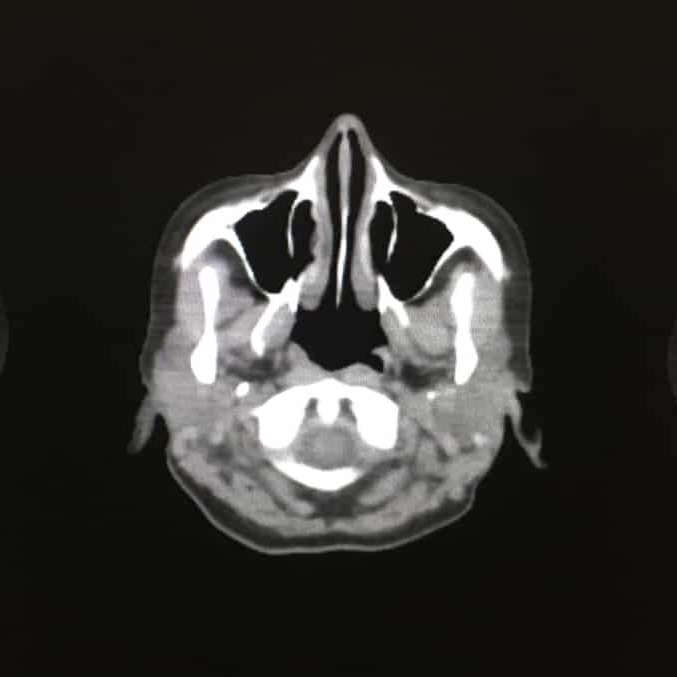
Consequently, bone appears very bright on the CT images, various anatomical structures appear in shades of gray, and liquids and air show up as very dark areas.
The detector assembly, positioned opposite the X-ray tube, converts the captured image data into a high-speed fiber optic signal, which the CT scan computer processes.
This data is then reconstructed into 2D image slices and 3D renderings, allowing a radiologist to make an accurate diagnosis.
Related article: CT scanner components explained
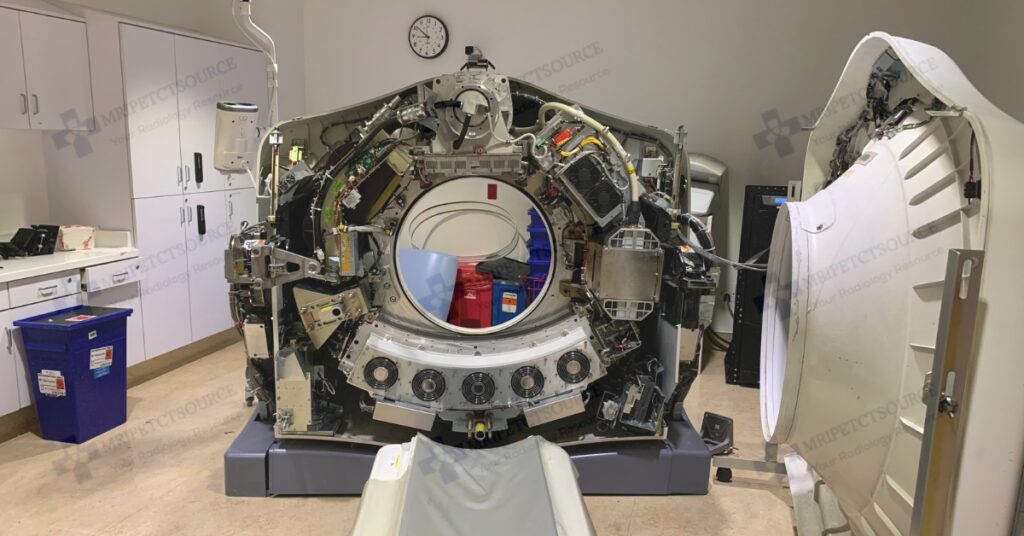
During the scan, a contrast agent may be administered to enhance the images. This contrast medium helps to differentiate blood vessels, organs, soft tissues, and tumors, making it easier to identify and diagnose any pathology. Ultimately, radiation exposure varies by examination prescribed. Find out more with our CT scan cancer risk calculator.
The detector assembly sits opposite the x-ray tube. It converts the image data to a high speed fiber optic signal for processing by the reconstruction computer. 2D image slices and 3D rendering enable accurate diagnosis by a radiologist.
Radiation Exposure in CT Scans
CT scan radiation risk varies depending on the type of examination. See more information below.
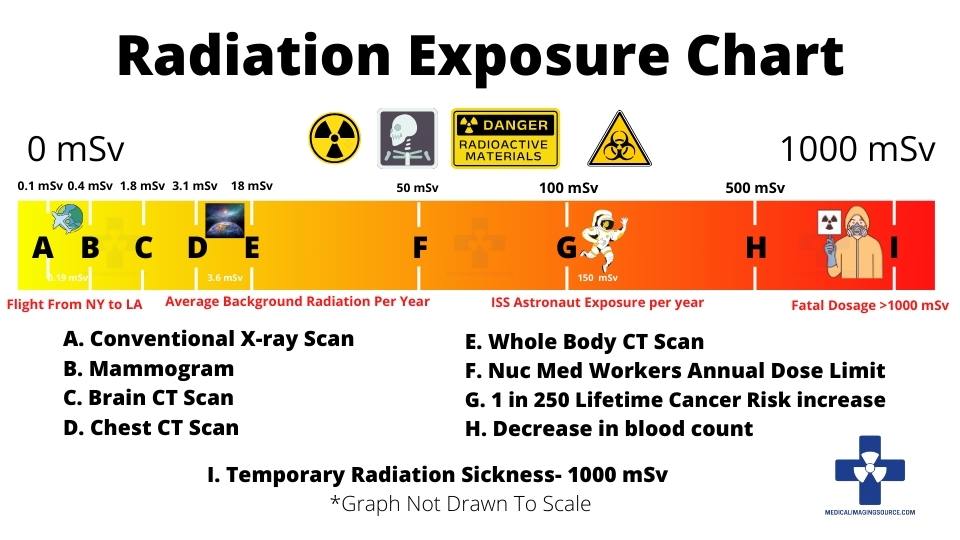
Computed Tomography utilizes ionizing radiation to acquire images of the anatomy. Improvements in CT technology have provided methods of lowering radiation doses during imaging however, any amount of ionizing radiations should be avoided, especially in a non-clinical setting.
CT Scan Radiation Risk
An average chest CT scan exposes the patient to approximately 3.1 millisieverts (mSv) of radiation, which is about the same amount of background radiation an average person receives in a year.
Brain CT scans exposes patients to about 1.8 mSv of radiation, while a whole-body CT scan can require exposure up to 20 mSv. However, the low-dose imaging techniques used during a CT scan ensure that patient exposure adheres to the ALARA (As Low As Reasonably Achievable) principle.
CT scan radiation dose (and risk) varies depending on scan region of interest. A link has been provided to the American College of Radiology Radiation Dose Reference card for your convenience. The reference card details the relative values for different anatomical regions including whole body, head, chest, and abdomen. Find out more with our CT scan cancer risk calculator.
Related article: MRI vs CT Scan: Which is the best imaging option for you?
CT Scan Pros and Cons
Computed Tomography is on the cutting edge of technology and is continually improving the patient experience. However, CT scan technology comes with its unique limitations. Below, we will be discussing some of the advantages and disadvantages of a CT scan.
CT scan advantages
Computed Tomography (CT) scan times are among the quickest in diagnostic imaging. On average, a CT scan takes between 10 and 30 minutes from start to finish. This duration includes patient setup, the actual scan, and image post-processing. The exact time can vary depending on the anatomical region being examined. If contrast agents are used, an additional 10 to 15 minutes is required. This efficiency makes CT scans a versatile and non-invasive diagnostic tool. Read more about the benefits of CT scans below.
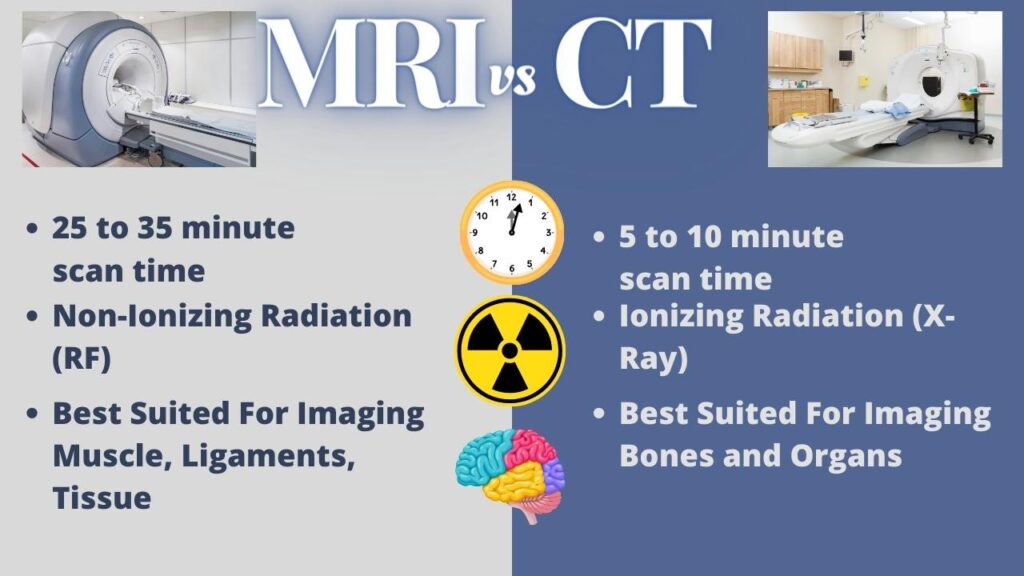
- Fast Scan Times (10 to 30 minutes)
- Ideal when imaging organs and bone structure
- Minimally-Invasive Procedure
- Low X-ray Radiation Dose
- Fast Imaging Process Times Ideal for ER setting
Patients should plan to arrive 20 to 30 minutes before their scheduled imaging time to complete paperwork and prepare for the exam.
Related article: MRI vs CT Scan
Note: Some contrast agents may need to be administered up to an hour before imaging. Consult your imaging facility for details.
Detecting illness with CT scans
CT scans detect various illnesses such as cancers, infections, and organ/bone diseases. A chest and abdomen CT scan can reveal lung cancer, liver disease, and other internal illnesses. CT scans are especially useful in detecting cancers at an early stage, increasing the chances of effective treatment.
Diagnosing illness with CT scans
CT scans provide detailed internal images, aiding in accurate diagnosis of conditions such as tumors, cysts, and internal bleeding. This makes them excellent diagnostic tools compared to regular X-rays. Additionally, CT scans can be used to diagnose conditions that are not detectable through other imaging techniques, such as X-rays or MRI scans.
Assessment of treatment effectiveness
CT scans are also critical in assessing the effectiveness of treatments for various illnesses. CT scans show internal body structures, helpful in diagnosing and monitoring diseases, by providing detailed images of bones, organs, and tissues. They can detect changes such as shrinking tumors or disease progression.
Non-invasive benefits of a CT Scan
CT scans are minimally invasive, meaning that they do not require surgery or other invasive procedures. Patients simply lie still on a table while the X-rays are taken. This makes CT scans a safer and less painful option when compared to other imaging techniques.
CT scans have proven to be a valuable tool in detecting and diagnosing illnesses. They provide detailed images of internal structures that traditional X-rays often miss. CT scans can also be used to assess the effectiveness of treatments.
Additionally, CT scans are minimally invasive, making them a safer and less painful option for patients. If you have any questions or concerns about CT scans, be sure to consult with your healthcare provider.
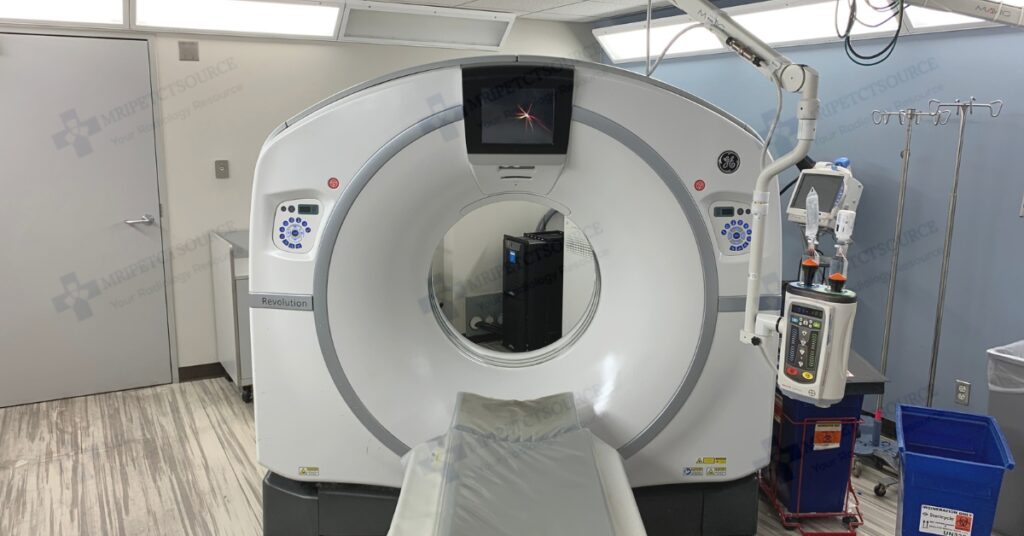
For helpful guides and videos, visit our Youtube Channel. We are always adding to our Library of Resources. User requests are always welcome!
Drawbacks and Limitations of CT Scans
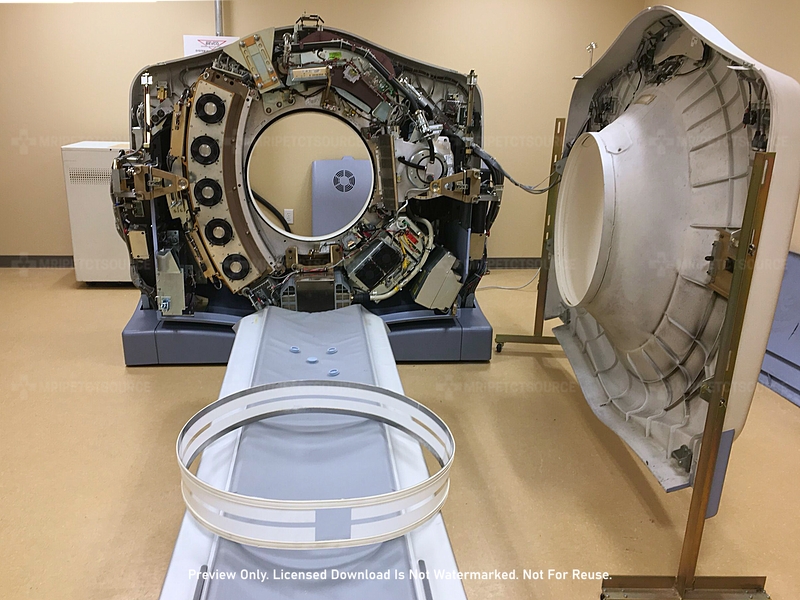
Computed Tomography is the most in demand diagnostic imaging modality in the world, but like all imaging modalities, there are some disadvantages and limitations. Below we detail some of the disadvantages of CT scans.
- Radiation exposure:CT scans involve higher doses of ionizing radiation compared to standard X-rays, which can increase the risk of cancer over time, especially with repeated exposure.
- Use of contrast agents: Some CT scans require the use of contrast agents, which can cause allergic reactions in some individuals. Contrast agents can also pose a risk to patients with kidney problems, potentially leading to nephropathy.
- Cost: CT scans can be expensive, especially without insurance coverage, making them less accessible for some patients.
- Limited soft tissue contrast: While CT scans are excellent for visualizing bone and detecting certain diseases, they are less effective than MRI in distinguishing between different types of soft tissue.
- Metal artifacts and image quality: Metal implants and movement during the scan can cause artifacts, which can obscure images and make interpretation difficult.
- Pregnancy concerns: CT scans are generally avoided during pregnancy due to the potential risks to the developing fetus from radiation exposure.
- Not suitable for all patients: Patients who are very large may not fit into the CT scanner, and those who cannot remain still may find the procedure challenging.
Understanding these limitations helps in making informed decisions about when and how to use CT scans effectively.
Side Effects of CT Scan
Most patients report no side affects as a result of CT examination. 3% – 11% of patients experience some form of mild allergic reaction to contrast dye (depending on administration method)
Most allergic reactions are mild, less than 2% of patients report moderate symptoms, .02% of patients experience severe reactions.
Less than 3% of patients have also reported a warming sensation for up to 20 minutes after initial contrast administration.
For more information, visit: https://pubmed.ncbi.nlm.nih.gov/21779853/
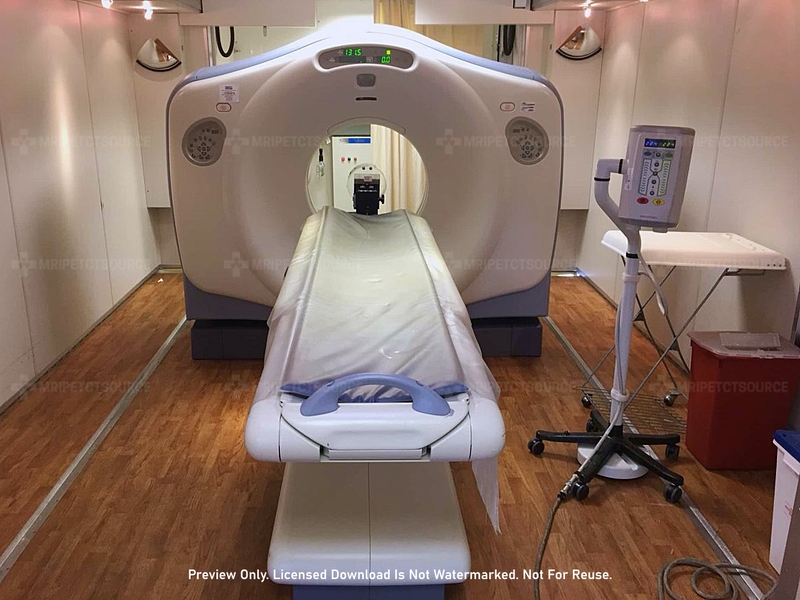
CT Image Artifact
Metal present in scan region or on patient may reflect X-ray and cause image artifact. Contrast spilled on scan window must be cleaned immediately or image artifact may be induced. Other sources of artifact include introduction of foreign object in scan window, detector assembly, X-ray tube and high voltage assembly malfunctions. Click here to learn more about CT scan image artifacts.
When examining CT scan images, bone shows up very bright. Anatomy shows up as varying shades of gray, while liquid and air will show up very dark.
CT Scan FAQ
A CT scan is a non-invasive, pain-free procedure to quickly acquire high definition images of the anatomy. Computed Tomography is the most in demand imaging modality because it provides an effective imaging solution with minimal radiation exposure and no pain from the imaging process.
Slight pain may be felt by patient if exam requires use of IV or injection. Patients report feeling a warming sensation during contrast injection. Some patients may experience pain during exam if having trouble laying in the supine position (on your back, face up) or in a lateral position (if needed). Read more on Side Effects in the section below or click the link to go directly to section.
Computed Tomography shows high definition images of bones, organs, soft tissue and blood vessels. Patient scans are taken in the axial plane and reconstructed into three dimensional images for use in diagnosis. The CT modality is used in many applications and can aid in the diagnosis of bone and joint issues, excess fluids, heart disease, colorectal disease, internal bleeding, tumors, and cancer. 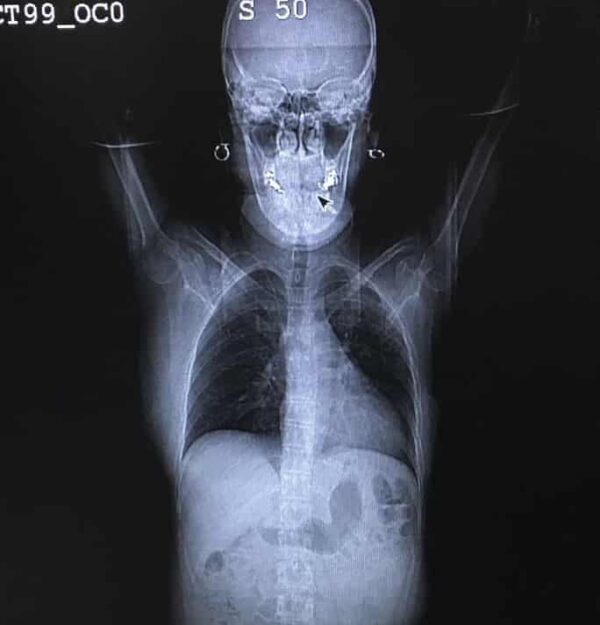
Strict guidelines are followed to ensure patient safety in radiological settings. CT scans are safe but should only be performed when necessary. In general, radiological exams should not be sought out and should only be performed after Physician deems radiological exam to have a net positive benefit to the patient. Although the long term effects for low dose radiation are still under study, Computed Tomography exams utilize ionizing radiation that can increase the risk of cancer. CT scans should only be performed under the direction of a physician.
Key Takeaways
Computed Tomography is a valuable resource to aid in diagnosis; there are no known benefits to healthy patients. Minimize risk of exposure to ionizing radiation at all times. Additional links have been provided below.
A CT scan provides a painless, non-invasive procedure to quickly acquire diagnostic images. Ultra-low radiation dose technology allows doctors and patients to plan diagnostic procedures without the risk of cancer. Learn more about CT with the additional resources available below.
Computed tomography imaging is at the forefront of technological innovation. Improving patient care and patient experience have been the main drivers for innovation in the field. New designs in detector modules allow for higher accuracy imaging with a lower dose and faster scan times. Improvements in the reconstruction computers and the algorithms that power them allow for faster reconstruction speeds and overall shorter CT exam times.
Related resources
Quick Navigation Links
Helpful Resources
The information provided by MRIPETCTSOURCE (“we,” “us,” or “our”) on https://www.medicalimagingsource.com (the “Site”) is for general informational purposes only. All information on the Site is provided in good faith, however we make no representation or warranty of any kind, express or implied, regarding the accuracy, adequacy, validity, reliability, availability, or completeness of any information on the Site. UNDER NO CIRCUMSTANCE SHALL WE HAVE ANY LABILITY TO YOU FOR ANY LOSS OR DAMAGE OF ANY KIND INCURRED AS A RESULT OF THE USE OF THE SITE OR RELIANCE ON ANY INFORMATION PROVIDED ON THE SITE. YOUR USE OF THE SITE AND YOUR RELIANCE ON ANY INFORMATION ON THE SITE IS SOLELY AT YOUR OWN RISK.

